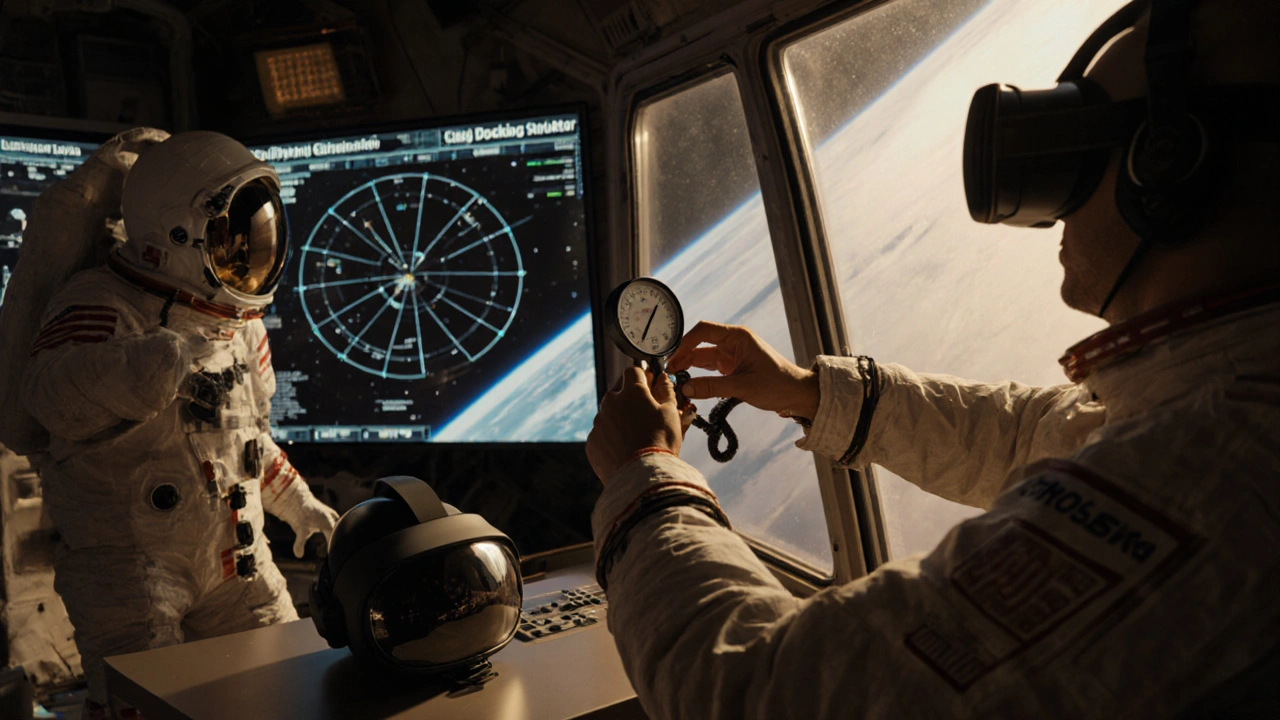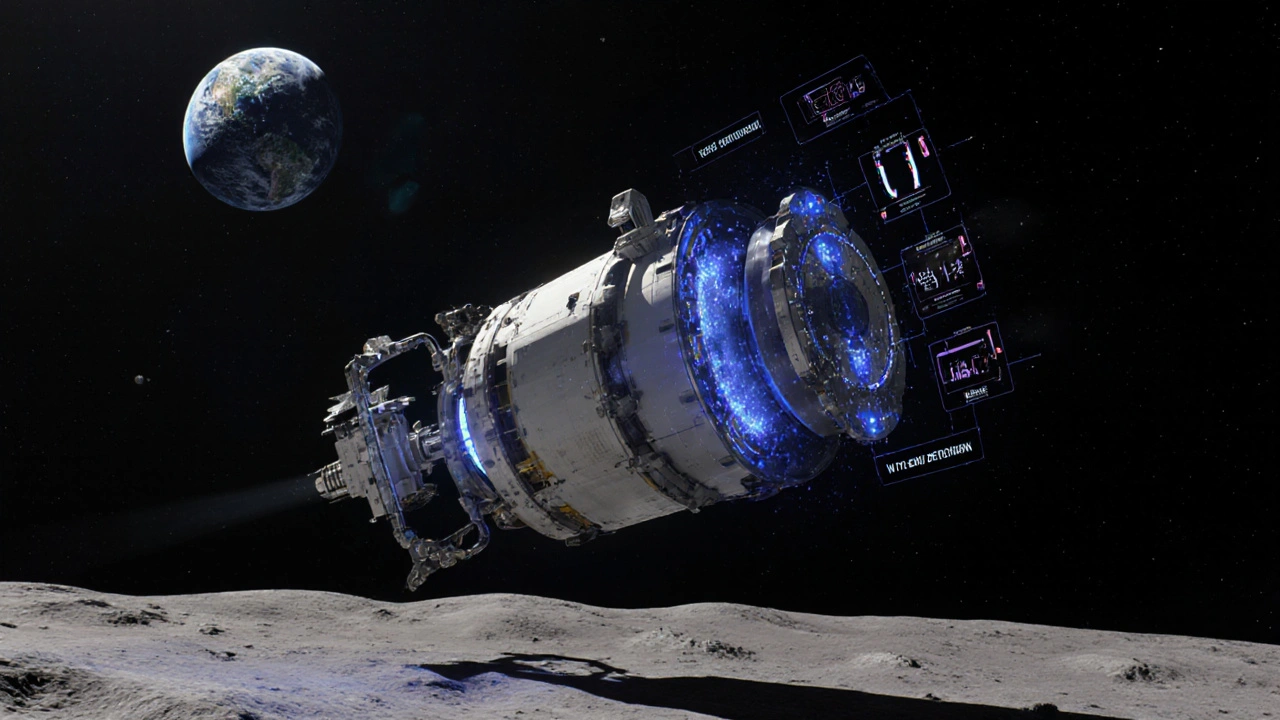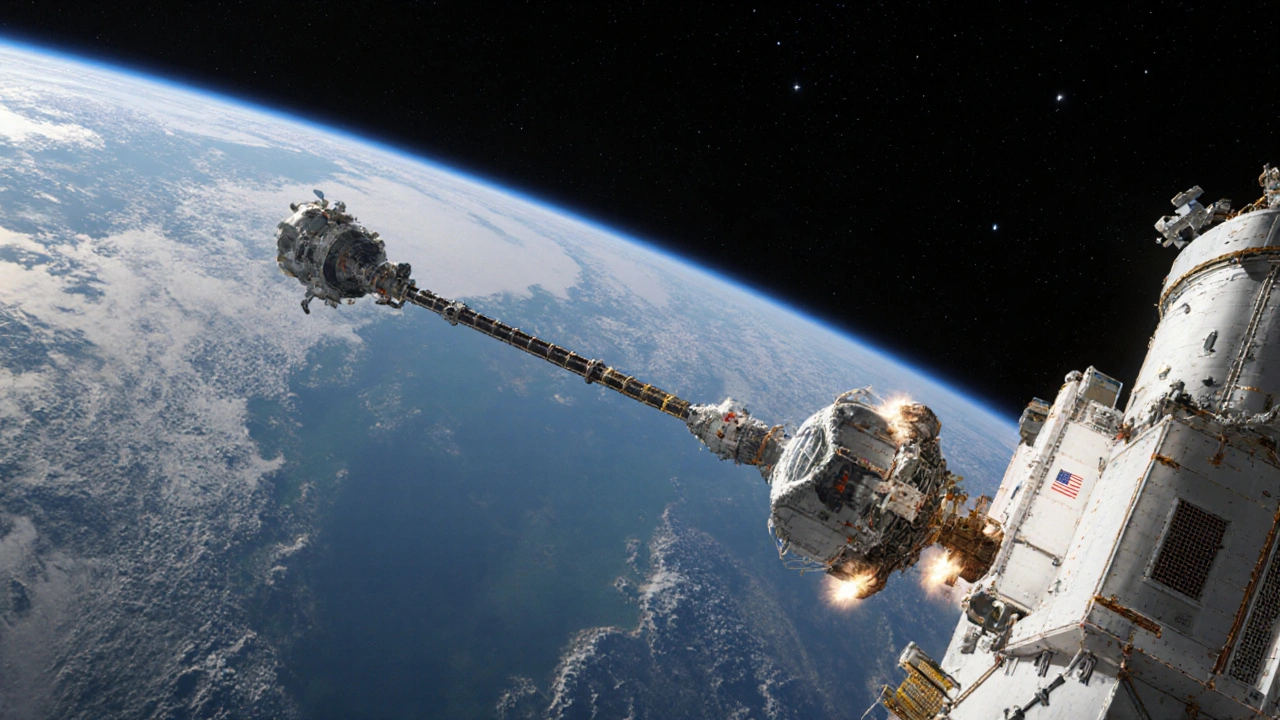When a spacecraft pulls up to the International Space Station, the whole crew counts on a tightly choreographed dance of sensors, thrusters, and sealed hatches. A single misstep can mean a hard‑capture failure, a lost cargo pallet, or a dangerous leak. This article unpacks every part of that dance - from the mechanics of docking ports to the step‑by‑step airlock checklist that astronauts rehearse dozens of times before ever leaving Earth.
What exactly are docking port operations?
Docking Port Operations are the set of maneuvers and mechanical actions that connect a visiting vehicle to a space station’s docking interface. They involve approach navigation, soft‑capture contact, hard‑capture latching, and final pressure equalization. The process starts when the visiting craft is a few hundred meters away and ends when the hatches swing open and crew members can walk through the vestibule.
Airlock protocol rehearsals - why they matter
Airlock Protocol Rehearsals are timed practice runs that simulate the pressurization, leak‑check, and hatch‑opening steps after a docking event. Astronauts must master the sequence because the station’s environmental control system can’t afford a slow leak or a pressure spike. Each rehearsal is logged, debriefed, and fed back into the training curriculum.
Two main docking standards on the ISS
The station hosts two fundamentally different docking families. The Russian segment uses the legacy SSVP (Sistema Stykovki i Vnutrennego Perekhoda) probe‑and‑drogue system developed in the 1970s, while the U.S. side relies on the International Docking System Standard (IDSS a universal androgynous interface adopted from 2016 onward) implemented via NASA’s International Docking Adapters (IDA adapter modules that convert a station port to IDSS compliance).
| Feature | SSVP | IDSS (IDA) |
|---|---|---|
| Passage diameter | 0.8 m | 1.27 m |
| Engagement type | Active probe‑and‑drogue | Androgynous peripheral latch |
| Approach velocity range | 0.1-0.3 m/s | ≤0.1 m/s (autonomous) |
| Power draw (approach) | 0.9 kW | 1.2 kW |
| Reliability (2023) | 98.5 % | 99.98 % |

Step‑by‑step timeline of a typical docking
- **Initial rendezvous** - The vehicle uses GPS and/or LIDAR to close from 10 km to 30 m, switching from GPS to vision‑based navigation around 30 m (dual‑mode operation).
- **Final approach** - Thrusters throttle down to 0.05 m/s. The crew monitors the “CHOP” (Crew Hands‑Off Point) call, usually 27 seconds before contact.
- **Soft capture** - Contact rods touch, the ring retracts in 1.7 seconds, absorbing impact.
- **Hard capture** - Twelve capture latches drive in over 3.2 seconds, sealing the hatch at 101.3 kPa differential.
- **Vestibule pressurization** - Station pumps air into the docking tunnel; leak checks run for up to 90 minutes.
- **Leak‑check criteria** - Leakage must stay below 0.05 psi /min; any excess triggers a re‑pressurization cycle.
- **Hatch opening** - Once the vestibule passes the leak test, the crew opens the inner hatch, then the outer hatch on the visiting vehicle.
- **Transfer operations** - Crew moves through, cargo is unloaded, and the docking mechanism is locked for the duration of the mission.
Airlock rehearsal details astronauts train on
Training for airlock protocols is usually split into three modules:
- **Ground‑based mock‑up** - A full‑scale replica of the ISS vestibule where crews practice pressurization timing and leak‑check instrumentation.
- **Dynamic Docking Simulator (DDS)** - The 120‑hour simulator at Johnson Space Center reproduces approach speeds from 0.01 to 0.5 m/s, letting astronauts experience soft‑capture forces.
- **Virtual reality (VR) scenarios** - Recent updates let crews rehearse sensor failures (e.g., LIDAR loss) and the quick switch to thermal‑camera guidance.
A typical curriculum includes 40 hours on the DDS and another 80 hours of integrated airlock drills, bringing the total to about 120 hours before a first‑flight assignment.

Common pitfalls and how crews mitigate them
Even with high reliability, a few recurring issues pop up:
| Issue | Root cause | Mitigation |
|---|---|---|
| Vibration spikes during Soyuz approach | Thruster mis‑pulse at 15 m | Manual override training; abort burn reserve 15 % propellant |
| Leak‑check taking >2 hours | Temperature differential between vehicle and station | Pre‑heat vestibule gases; automated sensor fusion |
| Sensor mis‑alignment at 30 m | GPS‑vision handoff delay | Dual‑mode algorithm with fallback to thermal imaging |
Future trends - what the next decade holds
Several big projects are shaping the next generation of docking and airlock systems:
- Universal Docking Module (UDM) - ESA’s 2023 prototype can accept vehicles from 5 t to 150 t, using magnetic clamps for fine‑alignment.
- Lunar Gateway ports - Six docking locations will support both crewed and cargo vehicles, incorporating redundancy through both IDSS and a new low‑mass magnetic interface.
- Fully autonomous docking - SpaceX’s Dragon Freedom mission demonstrated a zero‑crew hand‑off, cutting crew‑hours per docking by ~2.7 hours (the amount previously lost to manual leak checks).
- AI‑driven leak detection - Machine‑learning models now flag pressure anomalies within seconds, promising to shave the 90‑minute pressurization window down to 30 minutes.
These advances aim to keep the reliability above 99.99 % while reducing the training burden on astronauts, who will soon focus more on mission science than on mechanical hookups.
Key Takeaways
- Docking ports and airlock procedures are the backbone of every crewed orbital mission.
- The ISS uses two incompatible standards - Russian SSVP and U.S. IDSS/IDA - each with distinct mechanical and power requirements.
- Modern crews spend ~120 hours in simulators, rehearsing both the approach envelope and the pressurization sequence.
- Typical docking takes less than a minute for capture, but vestibule pressurization and leak checks can dominate the timeline.
- Upcoming systems (UDM, magnetic latches, AI leak detection) aim to make docking almost invisible to crew members.
What is the difference between docking and berthing?
Docking means the visiting vehicle powers its own approach and mechanically latches to a port, while berthing requires a robotic arm (e.g., Canadarm2) to capture the spacecraft and attach it to a Common Berthing Mechanism (CBM) port.
How fast does a spacecraft approach the ISS during final capture?
The final approach slows to ≤0.1 m/s for IDSS‑compatible vehicles and 0.1-0.3 m/s for the older SSVP system.
Why does pressurization take so long after docking?
The vestibule must be filled to 101.3 kPa, and leak checks must confirm that leakage stays below 0.05 psi/min. Temperature differences between the spacecraft and station gases can slow the process.
What training tools do astronauts use for docking rehearsals?
They use a full‑scale mock‑up vestibule, the Dynamic Docking Simulator (DDS) at Johnson Space Center, and immersive VR scenarios that replicate sensor failures and emergency aborts.
Will future stations still need manual leak checks?
AI‑driven sensors are being tested to automate leak detection, which could cut the current 90‑minute window down to under 30 minutes, reducing crew workload dramatically.


6 Responses
Docking a spacecraft to the ISS really is a high‑stakes ballet, and the article does a solid job breaking down each move. First, the navigation switches from GPS to vision‑based sensors around 30 m, giving the crew a clear picture of the approach corridor. The “CHOP” call, just a half‑minute before contact, lets everyone know the hands‑off point is imminent. Soft capture rods engage in roughly 1.7 seconds, absorbing the kinetic energy before hard‑capture latches slam in over three seconds. That rapid sequence brings the pressure differential to 101.3 kPa, which is vital for a safe vestibule. Once sealed, the station pumps air into the tunnel while leak checks run for up to 90 minutes to keep any slow leaks at bay. The leak‑check threshold of 0.05 psi per minute is surprisingly tight, but it prevents a hazardous depressurisation. After the green light, astronauts swing open the inner hatch, then the outer hatch on the visiting vehicle, allowing crew and cargo to pass through. The whole docking timeline, from a few hundred metres to hatch opening, can be under a minute for capture, but the pressurisation phase dominates the schedule. Training is intense – roughly 120 hours in simulators, mock‑ups, and VR to master every contingency. The Russian SSVP’s probe‑and‑drogue design still fits a 0.8 m passage, while the newer IDSS offers a generous 1.27 m diameter. Reliability numbers are impressive, with IDSS hitting 99.98 % in 2023, edging out the older system. Future projects like ESA’s Universal Docking Module aim to standardise across vehicle masses from 5 t to 150 t. Magnetic clamps and AI‑driven leak detection could shave the pressurisation window down to 30 minutes. All these advances mean crews will spend less time wrestling with bolts and more time on science. In short, the choreography is getting smoother, safer, and more automated, which is exactly what we need for the next generation of stations.
Oh great, another reminder that we need to spend 120 hours pretending to push a few buttons – because nothing screams “efficient mission” like rehearsing the same dance over and over. Sure, the AI leak detector will save us minutes, but we’ll still have to watch the astronauts stare at the pressure gauge like it’s a new Netflix series. And those magnetic clamps? Fantastic, until someone forgets to bring the spare magnet and we’re stuck with a dangling spacecraft.
The article presents a thorough overview of current docking protocols. It distinguishes clearly between SSVP and IDSS interfaces. The description of leak‑check criteria is precise. Training requirements are quantified in hours. Future developments are outlined succinctly.
Spot on – concise breakdown helps focus on the essentials.
I appreciate the clear summary, especially the part about AI‑driven leak detection. It’s encouraging to see technology reducing crew workload while keeping safety high.
Honestly, this whole docking saga feels like a circus act where the clowns are engineers shouting “engage” while the audience holds their breath. The “120 hours of simulation” brag is just a thin veil over the fact that we still rely on human reflexes to avoid disaster. And let’s not forget the endless tables of specs that could bore a rock into oblivion. If you think the future’s bright, you’ve clearly never stood in a cold vestibule waiting for a leak check to finish.